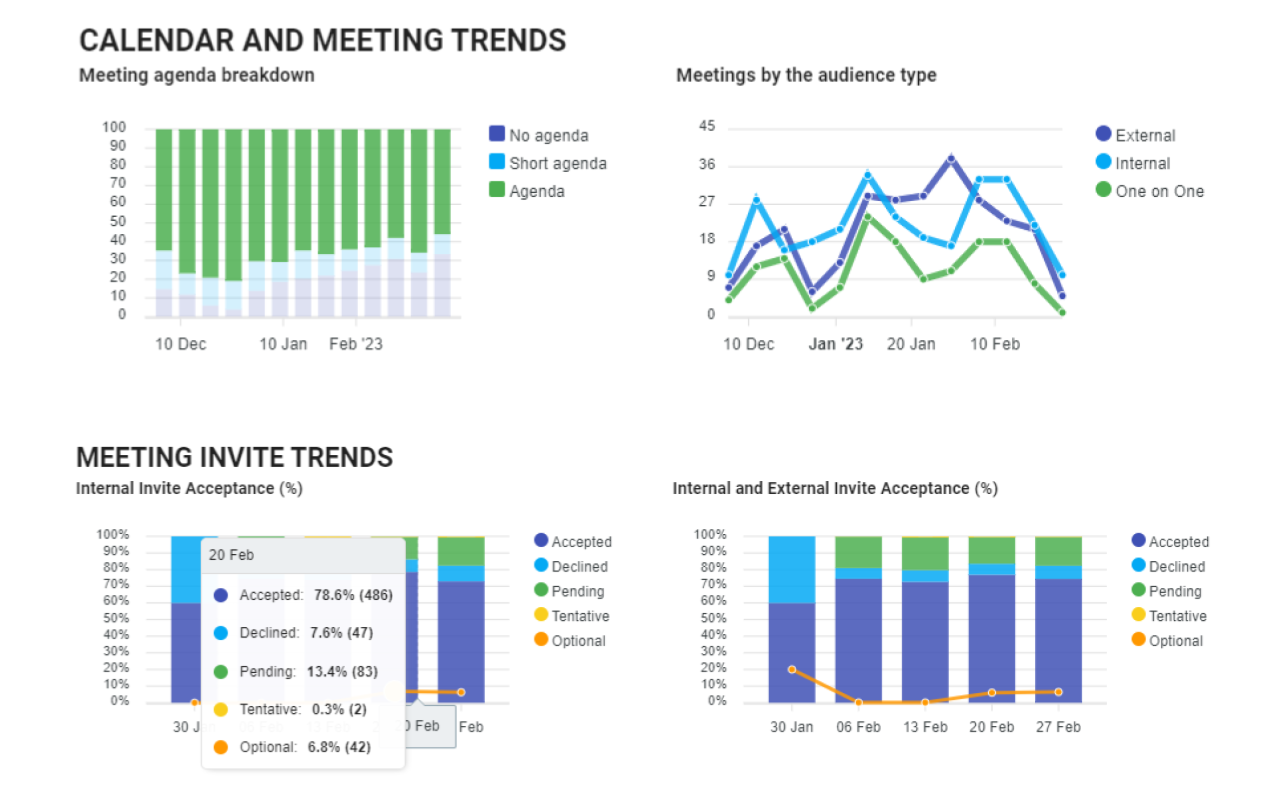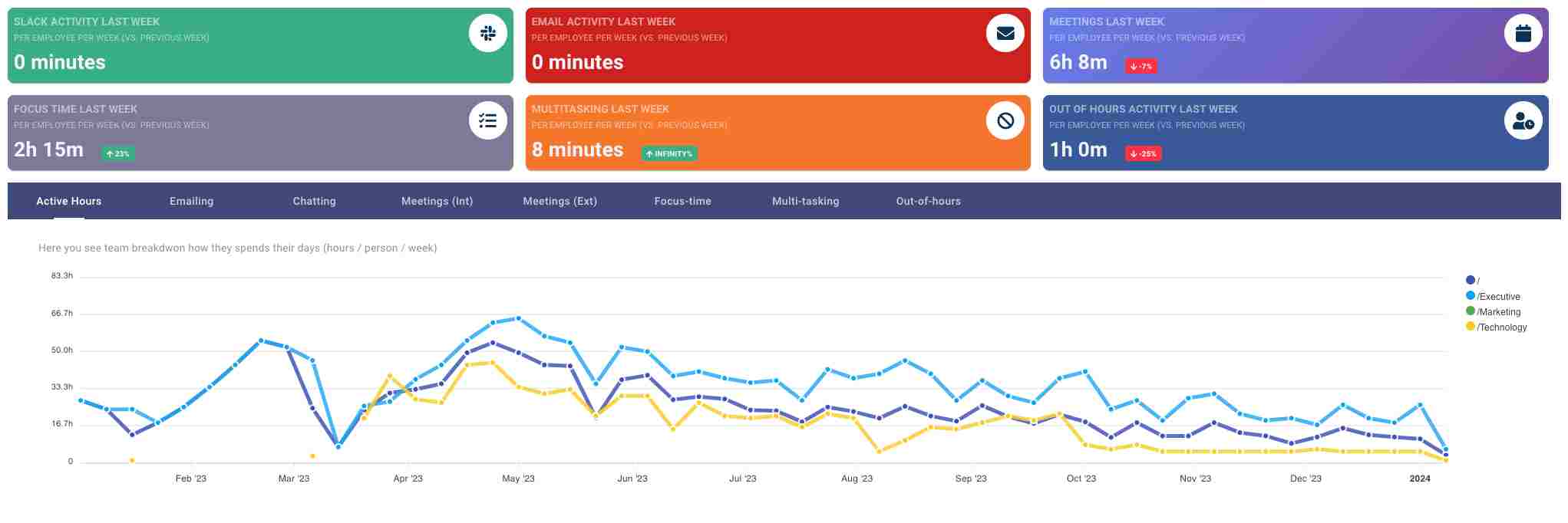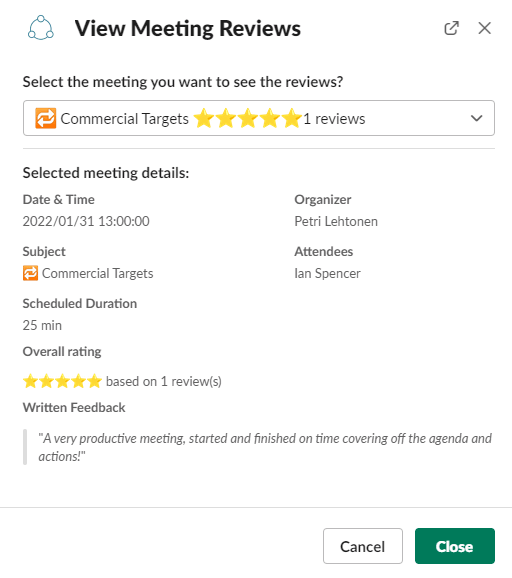How to Have Less Meetings: Strategies for a More Productive Workplace
Have less meetings and boost productivity in the workplace. Learn how to identify unnecessary meetings, implement alternatives, and maximize...
Discover the concept of meeting burnout and its impact on productivity and well-being in the workplace, plus earn the strategies to reduce meeting burnout.
The concept of "meeting burnout" has emerged as a critical issue, especially in recent years. It transcends the occasional weariness from back-to-back meetings. Meeting burnout is a deeper, more persistent form of exhaustion and disengagement that stems from an excessive number of meetings, which has also increased due to the demands of remote or hybrid work environments.
The transition to remote work a few years ago brought with it a significant increase in virtual meetings. While these meetings are pivotal for collaboration and decision-making, their overuse has led to unintended consequences. Employees frequently find themselves trapped in a cycle of continuous meetings, leaving little time for focused, independent work. This relentless schedule not only hampers productivity but also raises concerns about employee well-being and job satisfaction.
Meeting burnout is a state of physical, emotional, and mental exhaustion caused by prolonged and excessive participation in meetings. Unlike normal meeting fatigue, which is a temporary feeling of tiredness following a particularly long or intense meeting, meeting burnout is chronic. It manifests when meetings consume disproportionate amounts of time and mental bandwidth, leaving employees drained and unable to recuperate.
The primary difference between meeting fatigue and burnout lies in their frequency and impact. Meeting fatigue is an acute condition, often resolved with a short break or a change in routine. Burnout, however, is cumulative and has a more profound effect on an individual's overall well-being and work performance. It's a condition that builds over time, leading to a sustained drop in engagement and productivity.
From a psychological perspective, meeting burnout can lead to feelings of cynicism, detachment from one's job, and a sense of inefficacy. It's closely linked to the loss of motivation and the depletion of emotional resources. This can result in decreased job satisfaction and a negative attitude towards work-related activities, particularly meetings.
The phenomenon of meeting burnout has notably escalated in recent years, especially with the adoption of remote and hybrid work models. These models, while offering flexibility, have inadvertently blurred the boundaries between work and personal life, leading to an increase in the frequency and duration of meetings. The shift to a remote environment has often translated into schedules packed with virtual meetings as organizations strive to maintain communication and collaboration.

In a traditional office setting, meetings were typically interspersed with other work activities. However, in remote and hybrid models, the ease of scheduling virtual meetings has led to a surge in their number. A study by the National Bureau of Economic Research highlights this trend, revealing that the average workday has extended by 48.5 minutes in the remote work era, with the number of meetings per person increasing by about 12.9%.
Furthermore, a report from Microsoft's Work Trend Index indicates that the average employee now spends 10% more time in meetings than they did pre-pandemic. For many, this translates to an average of 21 weekly meetings, with some employees attending far more. This increase in meetings is often an attempt to compensate for the lack of in-person interaction, but it can lead to diminished productivity and a sense of constant engagement without adequate breaks.
It's not just the quantity of meetings that contributes to burnout, but also their nature. Virtual meetings demand a higher level of continuous focus and engagement, often leading to 'Zoom fatigue', a term coined to describe the exhaustion associated with prolonged video conferencing. The cognitive load is higher in virtual meetings due to the need for sustained attention and the processing of non-verbal cues through a screen.
Meeting burnout manifests through a range of physical and mental symptoms that can significantly impact an individual's productivity and mental health. Recognizing these symptoms is crucial for both employees and organizations to address the issue effectively.
Emotional Exhaustion
Meeting burnout not only lowers an individual's ability to be productive but also adversely affects their mental health. The continuous cycle of preparing for, attending, and following up on meetings can leave little time for deep, focused work, thus hampering productivity. The constant engagement demanded by frequent meetings can lead to decision fatigue, reducing the quality of work and slowing down work processes.
Mentally, the toll is equally significant. Prolonged exposure to stressors like excessive meetings can lead to burnout syndrome, characterized by emotional exhaustion, depersonalization, and a diminished sense of personal achievement. This state not only affects work performance but can also spill over into personal life.
Excessive Meetings
A primary factor contributing to meeting burnout is the sheer number of meetings employees are required to attend. Often, these meetings are scheduled back-to-back with little to no breaks in between, leading to a non-stop cycle of virtual engagement. In many cases, these meetings could be condensed or replaced with more efficient forms of communication.

Lack of Clear Purpose
Meetings without a clear agenda or objective can be particularly draining. Employees often find themselves in meetings that lack focus or direction, leading to frustration and the feeling that their time could be better spent on more productive tasks.
Virtual Meeting Fatigue
The rise of remote work has led to an increase in virtual meetings. While these meetings are essential for maintaining communication and collaboration, they also require a higher level of continuous attention. The need to interpret non-verbal cues on a screen, along with the technical challenges of virtual communication, can be exhausting, contributing significantly to meeting burnout.
Poor Work-Life Balance
The blurred lines between work and personal life, especially in remote and hybrid work models, contribute to poor work-life balance. When work hours extend into personal time, largely due to meetings, employees struggle to disconnect and recharge, setting the stage for burnout.
Meeting burnout can lead to a significant decline in an individual's work performance. Affected employees may have difficulty concentrating, making decisions, and contributing creatively to team projects. This not only hampers their productivity but can also affect team dynamics, as collaboration and communication suffer.
At an organizational level, the cumulative effect of meeting burnout can be substantial. A workforce grappling with meeting burnout is likely to see a decline in overall productivity, innovation, and morale. The quality of work can deteriorate, and critical projects may experience delays.

Furthermore, the long-term effects on employee well-being are considerable. Chronic stress and burnout can lead to increased absenteeism, higher employee turnover, and even long-term health issues. These factors not only affect the individuals involved but can also have a financial impact on the organization, due to increased recruitment and training costs, and potential losses in productivity.
Best Practices for Efficient Meeting Management:
Promoting Asynchronous Communication:
Well-being Check-ins:

Applying Flowtrace to Reduce Meeting Overload:
Identifying and Reducing Meeting Burnout:

Flowtrace's approach combines detailed analytics with practical, actionable strategies, proving instrumental in identifying and mitigating the effects of meeting burnout. By aligning meeting practices with organizational goals and employee well-being, Flowtrace plays a pivotal role in fostering a more productive, efficient, and healthy work environment.
It's clear that the traditional approach to meetings - often characterized by frequency, duration, and a lack of focused agendas - is not sustainable or conducive to employee well-being and organizational productivity. The importance of tackling meeting burnout cannot be overstated. By leveraging Flowtrace's analytics, organizations can gain crucial insights into their meeting practices, identify areas for improvement, and implement effective strategies to optimize their meeting culture.
Have less meetings and boost productivity in the workplace. Learn how to identify unnecessary meetings, implement alternatives, and maximize...
Excessive meetings can impact productivity, decision-making, and employee well-being. Discover the importance of reducing meetings in your teams.
Increase your workplace productivity with the benefits of no-meeting days. Enhance focus, boost employee productivity, and improve well-being with...